What is tapioca? Find out everything you need to know about this derivative of cassava, its uses, how to cook it, global recipes made with tapioca flour and pearls, and much more.
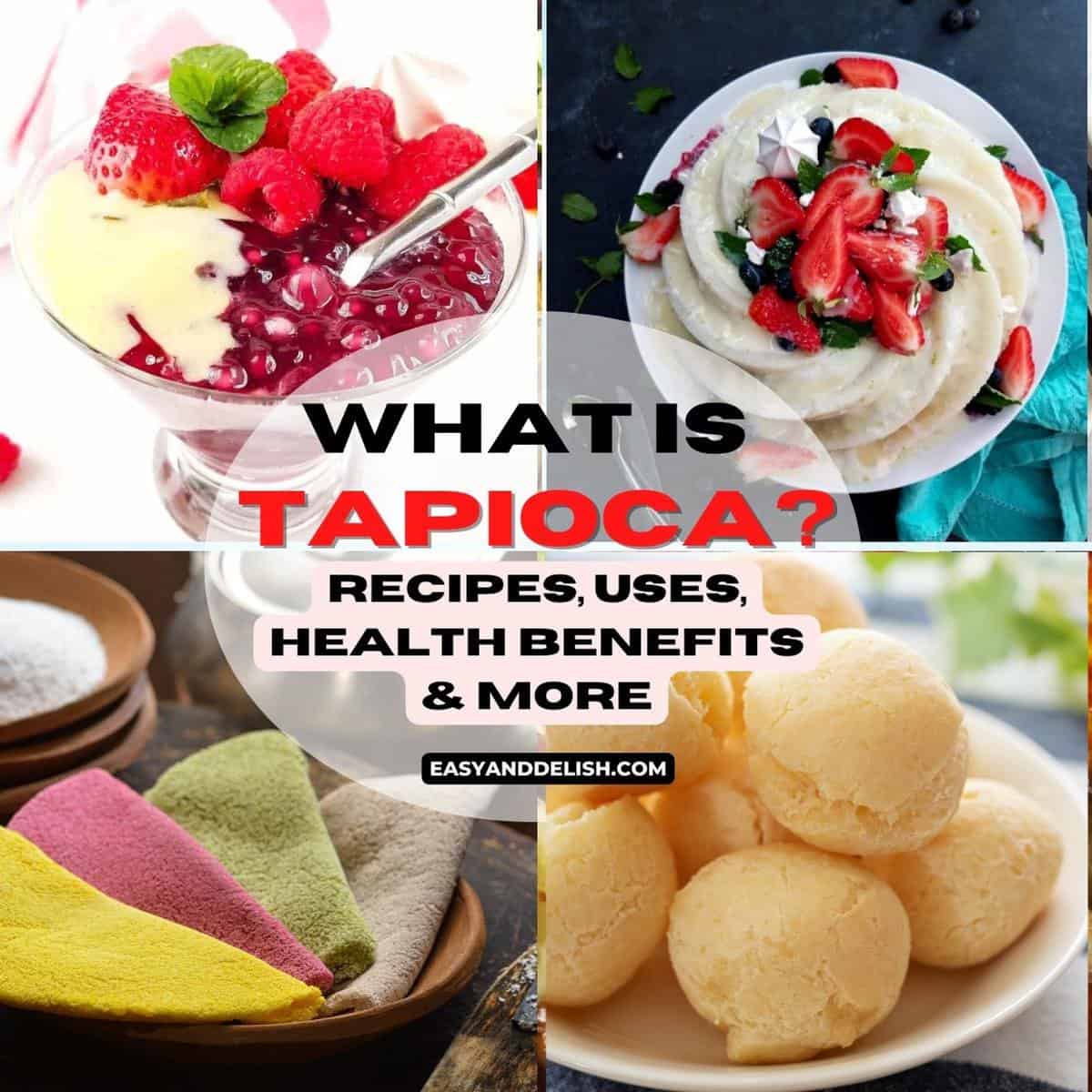
Table of Contents
- 1 What is Tapioca?
- 2 Tapioca Substitutes
- 3 Global tapioca recipes
- 4 What Is It Made Of?
- 5 How Tapioca is Made?
- 6 What Is It Used For?
- 7 What Is Cassava Flour?
- 8 What Is Tapioca Flour?
- 9 What Is Tapioca Starch?
- 10 Is Tapioca Healthy?
- 11 Nutritional value
- 12 Benefits of Tapioca
- 13 Possible Negative Effects
- 14 Fortification
- 15 How to cook with tapioca
- 16 What Does It Taste Like?
- 17 Where to Buy Tapioca
- 18 Is Tapioca Poisonous?
- 19 Is Tapioca Gluten-Free?
- 20 Storage
- 21 Fresh vs. Store Bought
- 22 Using Food Coloring
- 23 What Is Quick Cooking Tapioca?
- 24 What is Tapioca Syrup?
- 25 What Is Tapioca Maltodextrin?
- 26 Countries that eat tapioca the most
- 27 Facts
What is Tapioca?
Have you ever heard of the cassava or yuca plant? Cassava is a staple vegetable in South American countries, especially in Brazil.
It comes from the cassava root. You might know it as a gluten-free substitute for wheat flour or as a pudding base.
There's a lot of debate around it in the world of health and nutritional cooking. Some say that it is nutritious and healthy, while others don't think so.
Let me answer your questions in this post.
Tapioca Substitutes
You can use the following instead of tapioca:
- Cassava flour
- Arrowroot
- Cornstarch
- Potato starch
- Rice flour
All of these are also gluten-free.
Global tapioca recipes
- Brazilian cheese bread (pão de queijo)
- Colombian pan de yuca
- Cassava flour brownies
- Paleo tortillas
- Farofa (Brazilian)
- Paleo tapioca flour pizza
- Brazilian tapioca crepes
- Brazilian gluten-free breadsticks (biscoito de polvilho)
- Gluten-free waffles (Brazilian waffle pão de queIjo)
- Brazilian tapioca pudding (sagú de vinho)
- Brazilian tapioca cake (bolo de tapioca)
- Cireng (fried tapioca flour from Indonesian)
- Bika Ambon (honey comb cake from Indonesia)
- Bánh Da Lợn (Vietnamese steamed layered cake)
- Filipino bilo bilo
- Bacon and cheese hot pockets (Enroladinho de pão de queijo)
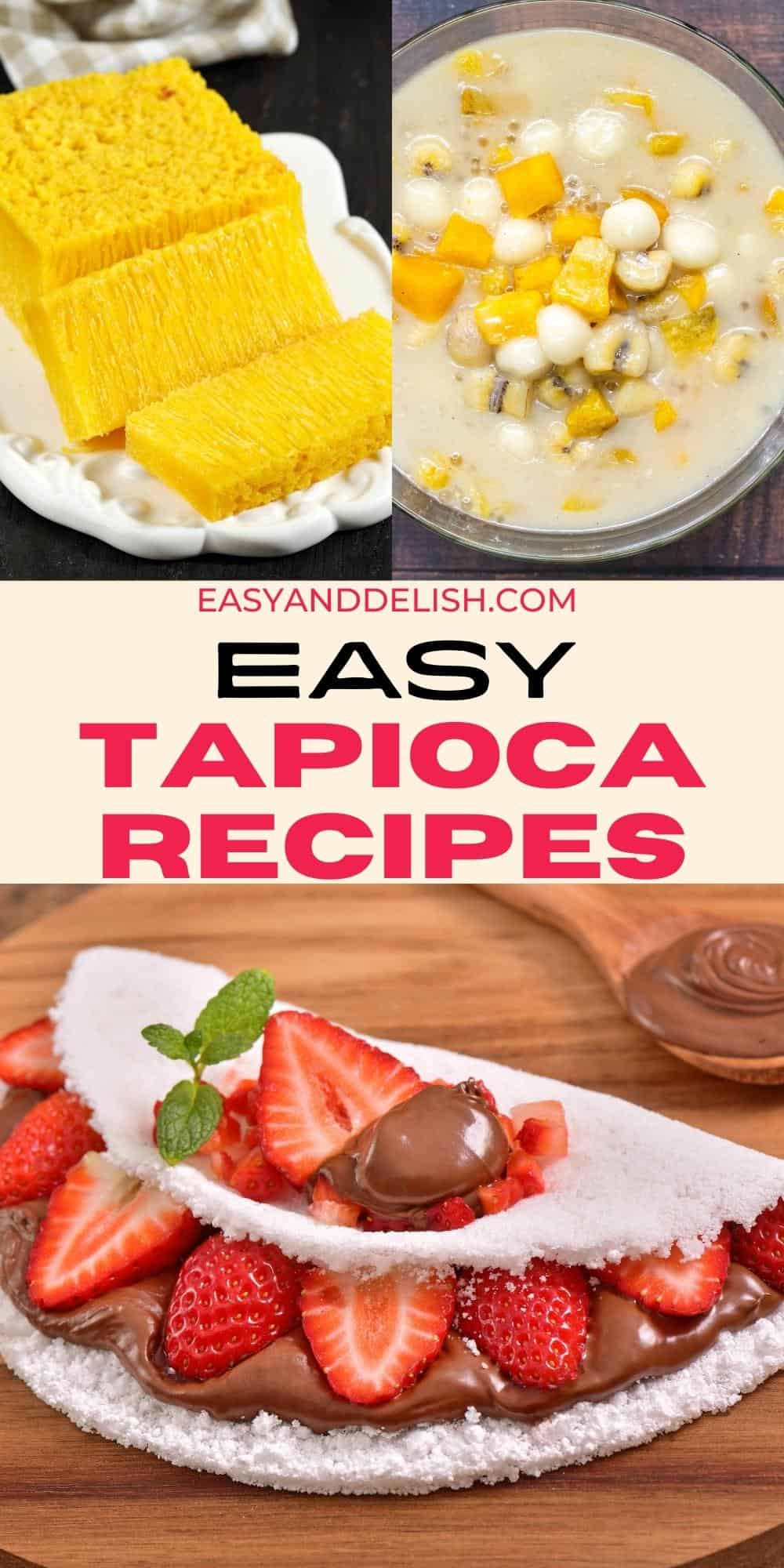
What Is It Made Of?
It is a starch that resides in the root of the cassava plant. It is almost purely carbs; it has no protein or vitamin content.
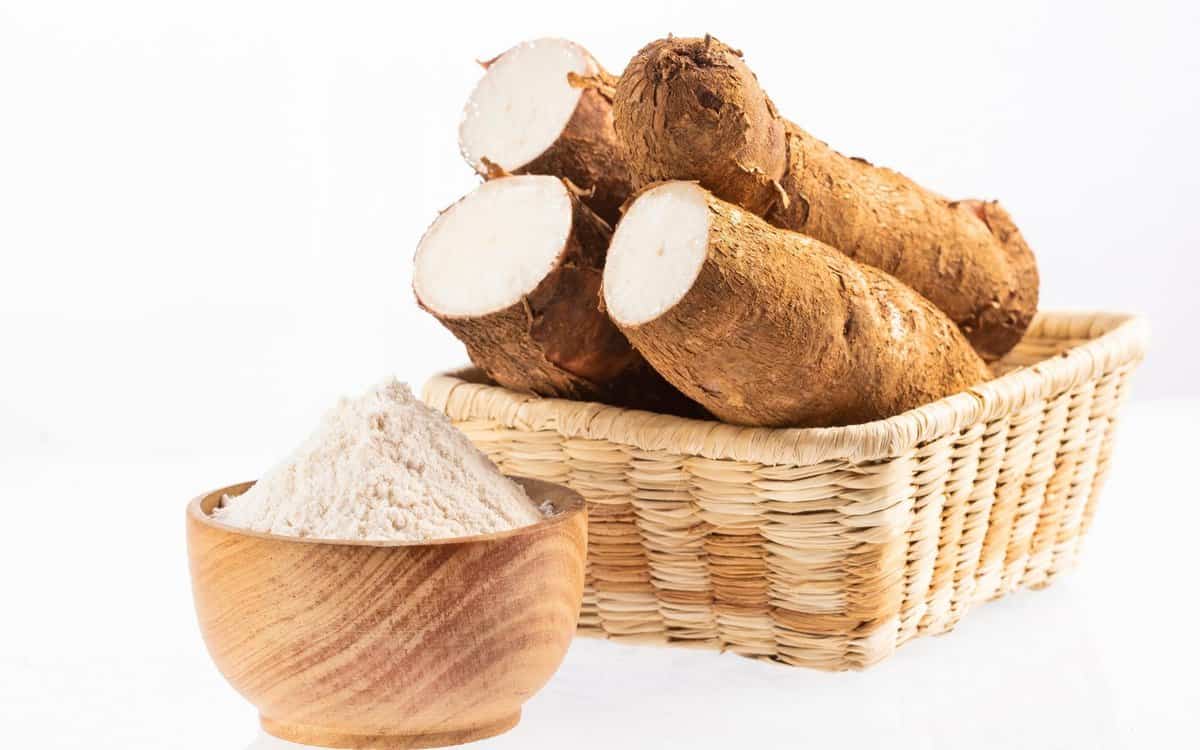
How Tapioca is Made?
- It is made by grinding the cassava root to a wet pulp and squeezing out the starchy liquid through a weave.
- This starchy liquid is left to dry out to a powdery form.
- This powder is then processed into flour, pearls, sticks, or flakes.
- Whatever form you buy them in, tapioca needs to be first rehydrated before you can use it.
- Adding water to tapioca makes it swell and grow in volume, and it might also become translucent.
- In its 2 more common forms, tapioca flour is used as a thickener or as a substitute for white or whole wheat flour while the pearls are used to make puddings.
What Is It Used For?
One of the most important things you should know about tapioca is that it is a grain-and gluten-free product extracted from the cassava root. This makes it a perfect substitute for wheat. You can use tapioca in various ways:
- Puddings: Many people use the pearls for making puddings.
- Gluten-free bread: As mentioned already, the flour is a good substitute for wheat in bread since it is gluten-free. Some cultures also use the flour for making tortillas, crepes, and flatbreads served along with toppings (somewhat like a pizza).
- As a binding agent: You can use the flour for making burgers and nuggets. The thick moisture-laden dough made from tapioca brings consistency and creates a binding effect on various materials.
- For thickening gravies and soups: Use tapioca flour as you'd use corn starch for thickening soups, gravies, sauces, and so on.
- For starching: It is almost purely starch, so you can use it as a starching agent for your clothes to maintain their creases.

What Is Cassava Flour?
Many confuse tapioca flour with cassava flour since they both come from the cassava root.
The two are not the same because tapioca flour is the starch extracted from the starchy part of the cassava root, whereas cassava flour is made by grinding the whole root which contains protein, other nutrients, and more fiber.
Cassava flour is less processed and has more thickening power than tapioca flour!
What Is Tapioca Flour?
Tapioca flour is another name for tapioca starch. You can use it in many ways in the kitchen.
One of its best properties is that its flour retains texture even after you freeze it, unlike other flours that would cause your frozen soup to become mealy.
In Brazil, there are two types of tapioca flour:
- Plain (aka ‘polvilho doce’) – super thin with a powdery texture, giving Brazilian cheese bread a light texture. It’s widely available in American grocery stores.
- Sour starch (aka ‘polvilho azedo’) – a fermented flour with a fine granular texture that gives Brazilian cheese bread (‘pão de queijo’) a dense texture. Sieve it before using it!
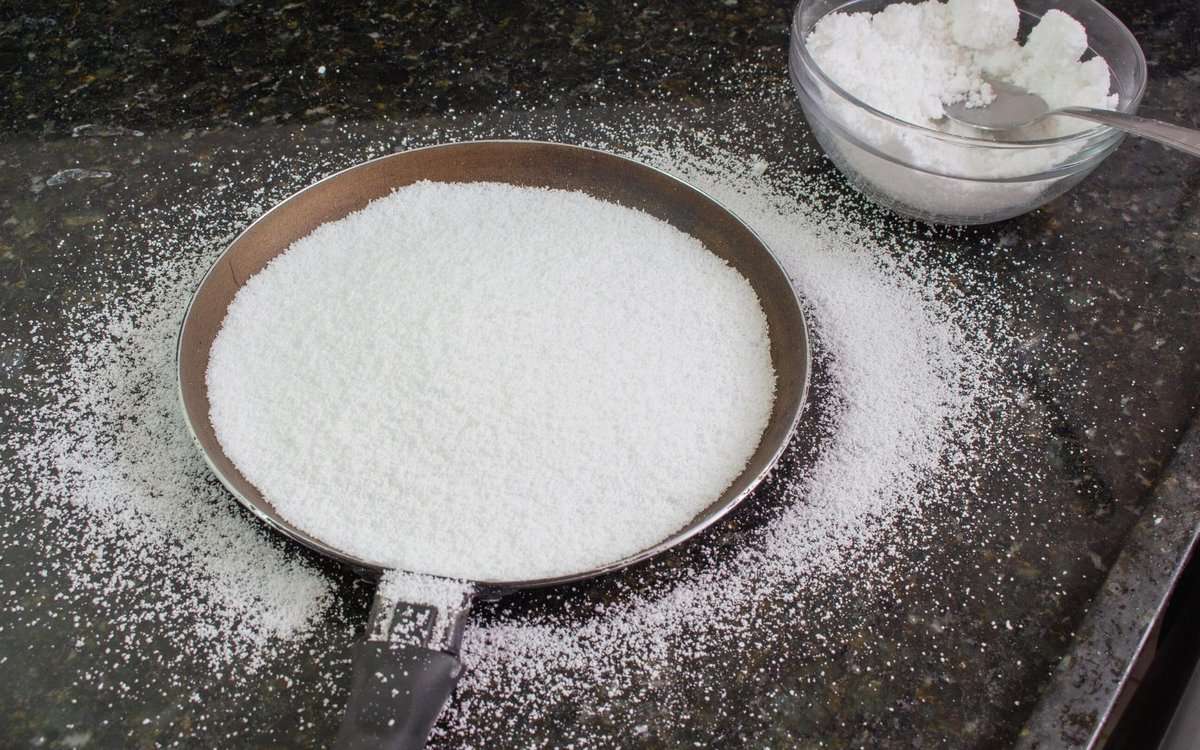
What Is Tapioca Starch?
Tapioca starch is the same as tapioca flour; it is a gluten-free substitute for wheat. You can also use it for other purposes such as thickening your sauces and gravies and as a binding agent for your burger patties.
Is Tapioca Healthy?
There is some debate on how good tapioca is for diabetics.
It is extracted from the cassava root which is rich in resistant starch or soluble fiber. This makes the cassava root good for controlling blood sugar.
However, cassava derivatives are processed ingredients and have a much lower quantity of resistant starch.
Moreover, it is almost entirely carbohydrates, which is not good for people with diabetes.
On top, it is not rich in nutrients like protein and vitamins, so it is not the ideal food for people with diabetes.
Nutritional value
A 2 oz (quarter cup) tapioca starch serving has:
- Calories: 74
- Carbs: 12 grams
- Protein: 1.2 grams
- Sugar: 0 grams
- Fiber: 0 grams
- Fat: 0 grams
Benefits of Tapioca
It is a good source of carbohydrates, but apart from that, its nutritional content is almost null. Let's look at some of another benefits of tapioca and some bad effects of using it in excess.
1. Suitable for restricted diets
- Nearly 6% of Americans are gluten intolerant, and others may have allergies to wheat and grains. Tapioca is perfect for those with gluten and grain intolerance.
- You can swap corn and wheat-related products with tapioca so that such people can enjoy their meals without any issues.
- One drawback of it is that it is almost purely starch, so it might be best to add other types of flour to it to increase its nutritional value.
2. What about resistant starch or soluble fiber?
- Cassava root is a strong source of resistant starch, which may lower blood sugar levels and improve gut health according to PubMed (National Institutes of Health).
- But its by-product, tapioca, is low in resistant starch, most likely because it is processed several times before turning into tapioca. However, it still helps you feel fuller after your meal!
- There are several other sources of resistant starch, such as legumes, sweet potatoes, green bananas, etc.
Possible Negative Effects
Tapioca comes from the cassava root which can cause cyanide poisoning if not processed properly.
However, as long as it is made with the correct process, there should be no harmful health problems.
1. Poisoning
Cassava root contains linamarin. It is a cyanogenic glucoside that poisons your body if you consume it without cooking or processing properly.
However, there are ways in which you can easily remove linamarin from the cassava root, which involves soaking and boiling the root.
Tapioca is a highly processed version of cassava root. All the linamarin has already been extracted from it before reaching your table, so you don't have to worry about it.
2. Allergy
While tapioca is a savior for people who have a gluten allergy, there can sometimes be a case where a person might be allergic to cassava itself.
This happens rarely and only to those people who may already have an allergy to latex.
In this case, the body mistakes cassava for latex and starts attacking it, causing allergic symptoms.
Fortification
Tapioca is a highly processed cassava form, meaning that the final product is lacking in almost any other nutrient except carbohydrates.
Therefore, if you are thinking of switching to a tapioca-heavy diet due to your gluten allergy, it would be best to fortify tapioca flour with other nutrient-rich options, including almond and soybean flour.
In some African countries, where cassava is a staple for locals’ diet, its lack of nutrition can cause goiters and malnutrition.
How to cook with tapioca
There are three main ways to use tapioca, a naturally gluten-free ingredient, in your cooking:
Tapioca flour
You can use tapioca powder, starch, or flour to thicken soups and sauces the same way you’d use cornstarch. Mix it well with a small amount of cold water and add to your soups or sauces, stirring often until thickened.
You can mix it with almond or soybean flour to get nutrition and more texture.
Tapioca pearls
Most people would have seen tapioca as pearls that are opaque prior to cooking, turning translucent upon hydration. These are dry tapioca balls, which you first need to boil in water until soft, acquiring a chewy texture.
They come in large and small sizes. Boba is the large sweetened balls, often black. It makes bubble tea.
Add eight parts water to 1 part tapioca pearl and then let it boil. You will need to keep stirring the pot because the pearls become thicker and start sticking to the sides otherwise.
After some time, the pearls will start to float on the water. At this point, lower to medium heat and let the pot simmer for another 20-30 minutes. Then take it away from heat and let it sit for another half hour.
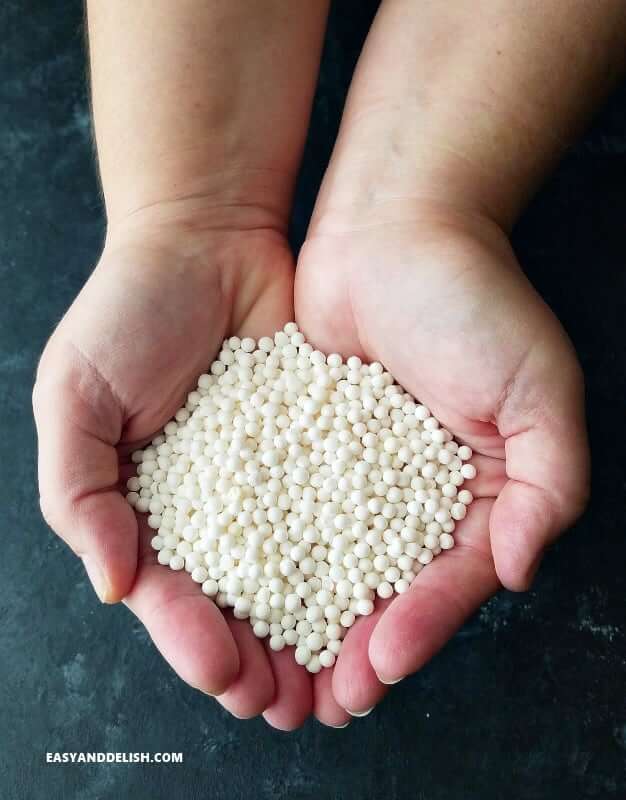
Bubble tea
Bubble tea is a cold beverage that calls for pearls, milk, ice, and syrup.
You can either make black tapioca pearls for bubble tea from scratch using flour, water, and brown sugar or black food coloring, or you can buy them ready.
Either way, cook the pearls in boiling water until edible before adding into your bubble drink.
Bubble tea is a very sweet beverage and isn't a healthy drink - if you want to have it, only drink it once in a while.
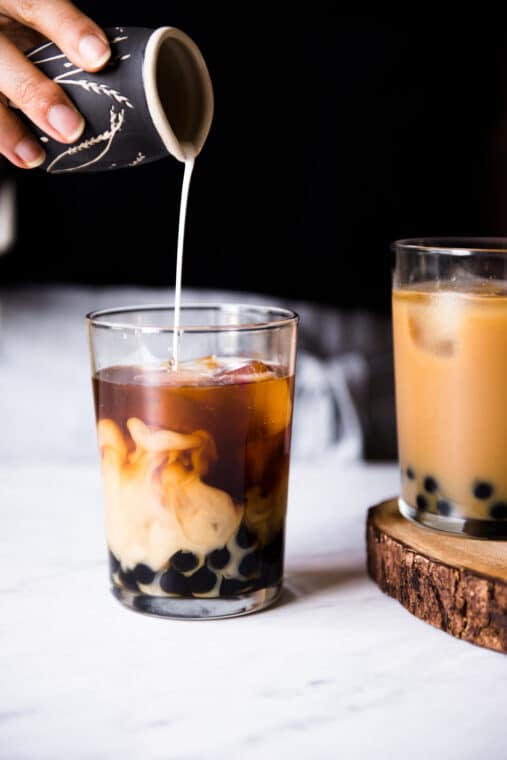
What Does It Taste Like?
Tapioca has very little taste.
But you can add syrup, fruit juices, or brown sugar to the pearls to make them sweet.
Or add salt to the flour in order to make savory crepes.
Where to Buy Tapioca
You can buy the pearls at most grocery stores and also online.
Is Tapioca Poisonous?
No, tapioca is not poisonous. It is a highly processed form of cassava root and does not contain anything that can cause poisoning.
Is Tapioca Gluten-Free?
Yes, tapioca is gluten-free. It is a good substitute for gluten-rich foods like wheat.
Storage
To store the pearls, put them in a dry place where the temperature is under 77°F (25° C).
Fresh vs. Store Bought
You can make tapioca pearls at home and add delicious flavors such as matcha pearls, boba, or mango. However, it will take a fair bit of time to make them!
Store-bought pearls have better texture and taste, but you can't customize them.
Using Food Coloring
You can use food coloring with the pearls without any problems. Traditionally, most recipes call for black food coloring.
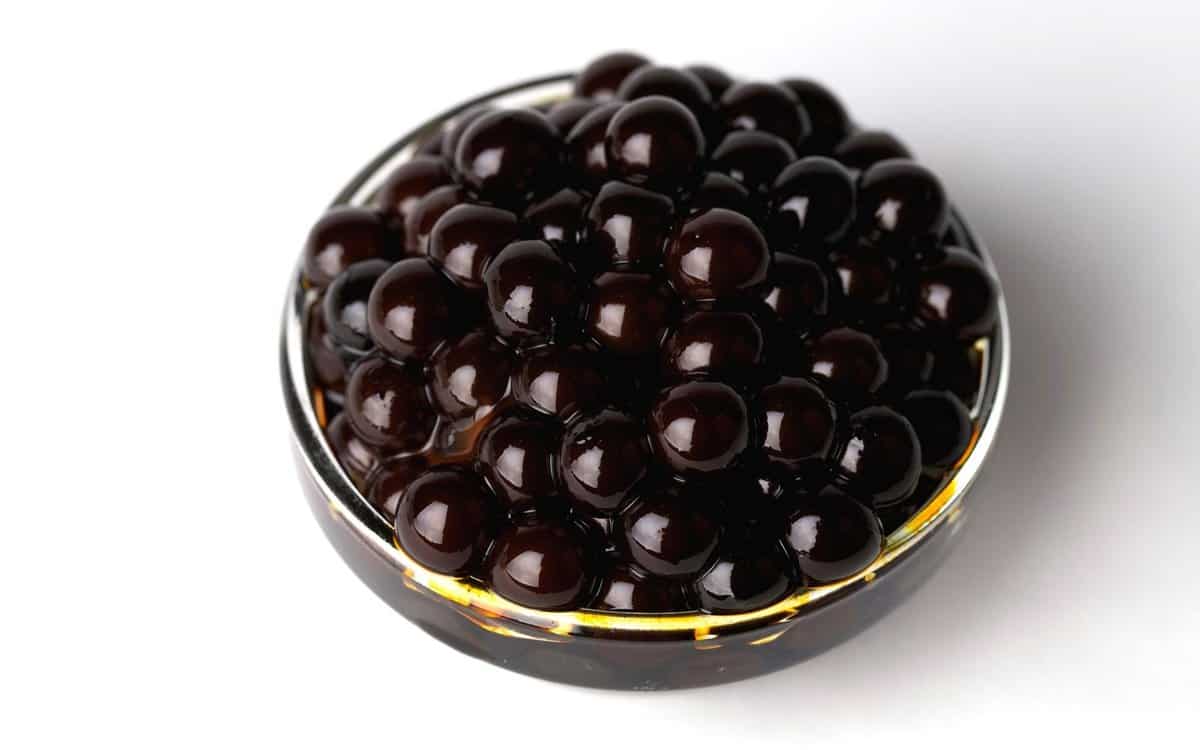
What Is Quick Cooking Tapioca?
Quick-cooking tapioca (instant tapioca or minute tapioca) consists of partially cooked tapioca pearls processed into granules or white granulated beads.
It cooks much faster than raw or dried tapioca pearls!
You can whisk the quick type into soups, gravies, pie fillings, jams/jellies, and other creamy mixtures to act as a thickener.
It is made by cooking and drying the pearls twice and also cracking them into granules.
What is Tapioca Syrup?
it is a sugar substitute made from naturally fermented tapioca starch. It contains lower sucrose and is gluten-free.
Find it often in gummy fruit snacks.
What Is Tapioca Maltodextrin?
It is a food additive used to:
- Increase the volume of dry mixes and frozen foods in the food industry.
- Stabilize fat ingredients and transform them into powders (it can turn olive oil into powder form). It's common in molecular cuisine!
Countries that eat tapioca the most
According to the Food and Agriculture Organization of the United Nations (food supply data 2011), the countries that have the highest intake of cassava plant-based foods are:
- Nigeria - 20,397,512 tonnes
- Indonesia - 11,607,925 tonnes
- Brazil- 8,490,712 tonnes
- India - 7,668,110 tonnes
- Ghana - 6,099,126 tonnes
- Mozambique - 5,203,505 tonnes
- Angola - 3,903,491 tonnes
- United Republic of Tanzania - 3,606,652 tonnes
- Uganda - 3,122,832 tonnes
- Madagascar - 2,745,027 tonnes
- China - 2,564,488 tonnes
- Cameroon - 1,990,343 tonnes
- Colombia - 1,724,935 tonnes
- Benin - 1,380,689 tonnes
- Malawi - 1,259,301 tonnes
Facts
- Boba pearls can come in many colors, such as yellow and pink, apart from the black color that most people know.
- Popping boba is not made from tapioca. These have different ingredients, including fruit juices and seaweed extracts.
- During World War II, many Southeast Asian countries used tapioca to tide over food shortages. As a result, many refugees survived mainly on it as the root can thrive in low-nutrient soil.
- While the cassava plant takes 10 months to mature fully, it is possible to harvest every 2 months. This meant that it was able to provide much-needed levels of carbs and a few other nutrients.
- One must never eat raw cassava due to the prussic acid in the root which can cause cyanide poisoning. Indeed, some have even used it to poison darts and arrows.
- There are two types of cassava: sweet and bitter cassava. Only the sweet varieties are available in the U.S., and the bitter kind makes flour and starches.
- The root of the cassava plant can make casabe among other world-famous dishes. But it also has another use than food when made into tapioca starch. It can be processed into biodegradable bags that are an alternative to plastic and can be composted.
- Besides being completely biodegradable, this form of tapioca is also recyclable, renewable, reusable, and sustainable. In like fashion, it is also possible to make aprons, gloves, and even caps from tapioca in this form.
- Because tapioca is a starch, one can use it on garments and shirts, applying it before ironing. It is available in bottles along with natural gum and is either in a spray form or powder. You can dissolve it in water.
- In Indonesia, the starch can make Krupuk, which is a traditional Indonesian cracker. Because of its diversity, you can combine it with many different flavors including minced shrimp or fish.
- The cassava root can also make cassava chips after drying in the sun which is a known side dish in many countries akin to french fries in the USA.
- By the way, the name tapioca actually comes from the word “Tipioka” in Tupi, a native language of South America. It means ‘starch'!
- As well as being a food staple in many countries around the world, tapioca also finds use as a thickening agent and an additive to traditional meals.
- Moreover, it is the most popular alternative to wheat flour in many Asian countries, mainly because it is gluten-free.
To sum up, tapioca is a widely available ingredient that is vital to many different countries and cultures. It comes from a root that’s been around for centuries and is a popular staple because it’s cheap to cultivate and process. Its health benefits include being gluten-free.
PIN & ENJOY!
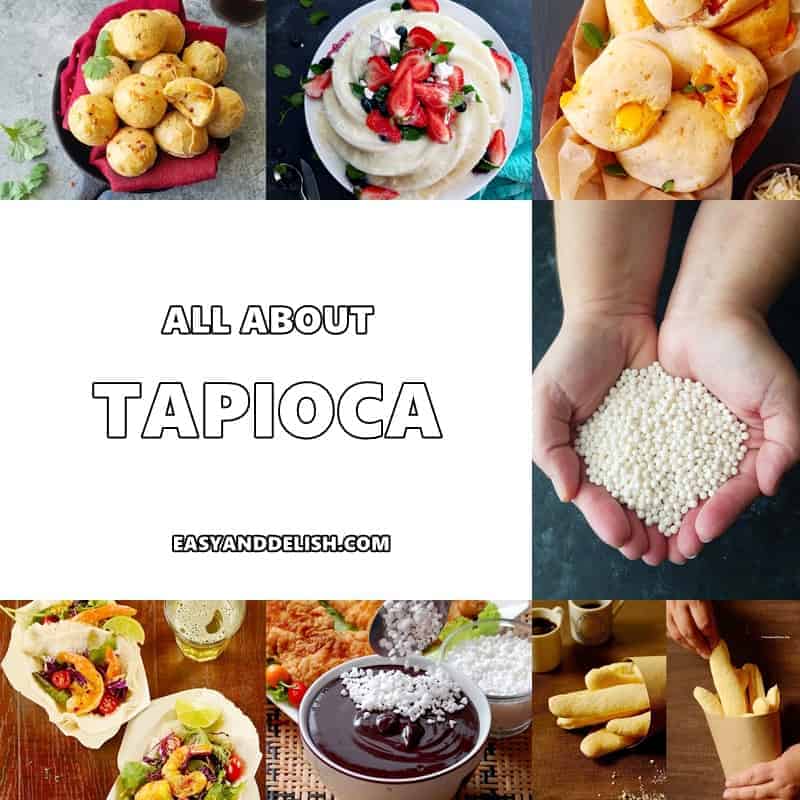
Clockwise: Pao de Queijo, Tapioca Cake, Brazilian Hot Pockets, Tapioca Pearls, Gluten-Free Breadsticks, Acai Bowl with Tapioca Pearls (Photo by Marcelo Soares on Flickr), and Shrimp Tapioca Crepes.
This page was first published on June 6, 2019.



